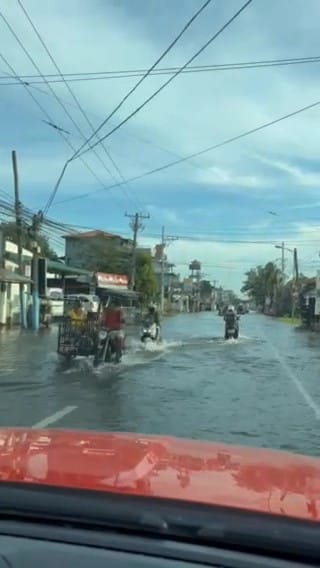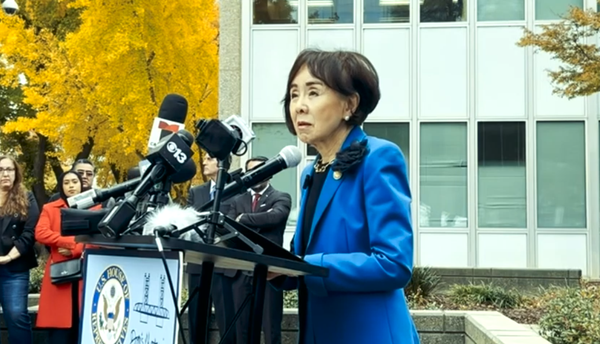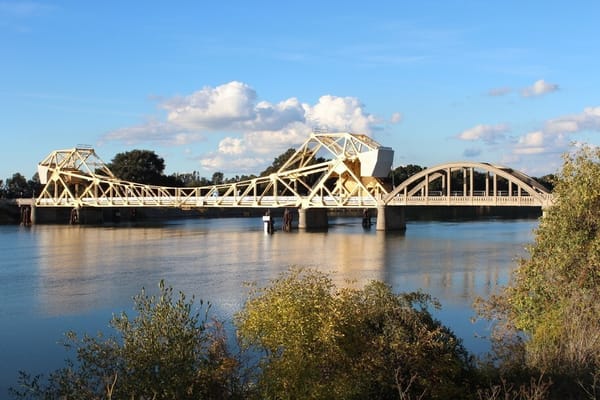2025 Philippines - A Case Study of Climate Change Colliding with and Causing Civil Unrest
Civil unrest resulting from flooding caused by climate change and political corruption

As a native-born American who has been immersed in Filipino culture for almost 35 years through marriage, I have become familiar with their society and people. In recent years, thanks to technology, communication with family has become accessible and economical.
As such, we have been receiving regular reports from family about two significant current events in the Philippine archipelago. Those events include record rainfall and civil unrest resulting from flooding caused by political corruption.
Story continued below
This video was recorded on September 27 in the city of Dagupan, Pangasinan Province. Roadway and household flooding have been a daily occurrence over the last several months. Pangasinan is located on the central western coast of Luzon, the largest and northernmost island of the Philippine archipelago.
Over the last several years, particularly before the current Trump administration, numerous studies conducted by the U.S. Department of Defense[War] have noted a connection between climate change and civil unrest. As pointed out in the 2014 study titled "Report on National Security Implications of Climate-Related Risks and a Changing Climate," it said:
"The report reinforces the fact that global climate change will have wide-ranging implications for U.S. national security interests over the foreseeable future because it will aggravate existing problems such as poverty, social tensions, environmental degradation, ineffectual leadership, and weak political institutions that threaten domestic stability in a number of countries.
The report finds that climate change is a security risk because it degrades living conditions, human security, and the ability of governments to meet the basic needs of their populations. Communities and states that are already fragile and have limited resources are significantly more vulnerable to disruption and far less likely to respond effectively and be resilient to new challenges."
In light of recent international events, it is worthwhile to examine the current weather conditions in the Philippines and their implications for the country. Although the archipelago is typically affected by typhoons and steady rain between May and November the wettest months are generally are July, August, and September.
This year, the Philippine rains have been heavier than usual, and this is not just from anecdotal stories from family. Consider this report from the Manila Bulletin:
"As more rains from the enhanced southwest monsoon, or "habagat," are expected to drench several parts of the Philippines, the chief of the Philippine Atmospheric, Geophysical and Astronomical Services Administration (PAGASA) said these persistent downpours may be linked to climate change, which is causing warmer seas and heavier rainfall.
PAGASA Administrator Dr. Nathaniel Servando explained on Wednesday, July 23, that climate change is causing global temperatures to rise, a trend that is also reflected in local temperature records.
He said average air temperatures in the Philippines have been steadily increasing alongside this global pattern, noting that rising temperatures also cause sea surface temperatures to climb.
"We know that when the temperature of our oceans is high, it produces more water vapor, which fuels tropical cyclones to become more intense. Of course, more water vapor means we will experience heavier rainfall when there is climate change or global warming," Servando explained in Filipino."
These heavy rains are affecting the daily lives of millions of Filipinos. Flooding, which is common during the rainy season, has become so persistent that it has now become a political problem, leading to widespread protests and civil unrest.
Filipinos are angry that tax money that was supposed to be used for flood control has instead been stolen, or at least what critics claim, by corrupt politicians and their cronies. Citizens are rightfully upset and are forcefully taking their anger to the streets, at least those that are not flooded.
You may wonder what protests and street flooding caused by heavy rains, which could be linked to climate change, in a developing economy, have to do with American interests as they relate to geopolitics. In a word, China.
Even though the United States left two giant Philippine military bases in the early 1990s - the U.S. Air Force base Clark Field and the U.S Navy port at Subic Bay - the two countries have remained allies. In fact, because of the ongoing harassment of the Philippines by China, the U.S. has been invited to reestablish a military presence.
The question of whether the American military should have a presence in the Philippines is a topic worth debating. We will leave that for another conversation.
For the most part, post-WWII and Cold War American foreign policy has actively maintained a military presence where it serves American interests. In the Philippines, the new American presence is intended as a counterbalance to Chinese encroachment.
So, what will happen if heavy rains persist for the next several years, and corruption and flooding continue unabated, and America continues towards an isolationist policy?
Aside from the catastrophic humanitarian and economic issues climate change could bring for the average Filipino, could this Asian ally be susceptible to continued civil unrest? Or from the American perspective, make it susceptible to invasion or be overtly controlled by another anti-American foreign power, thus diminishing American influence?
Should ocean waters continue their warming trend, resulting in sustained heavy Philippine rains, and combined with the institutionalized political corruption, Filipino citizens could be in store for a difficult future marred by civil unrest and instability.
If nothing else, the Philippines could serve as a case study of the Pentagon's forecast that climate change could have not just environmental effects, but also geopolitical security implications.




